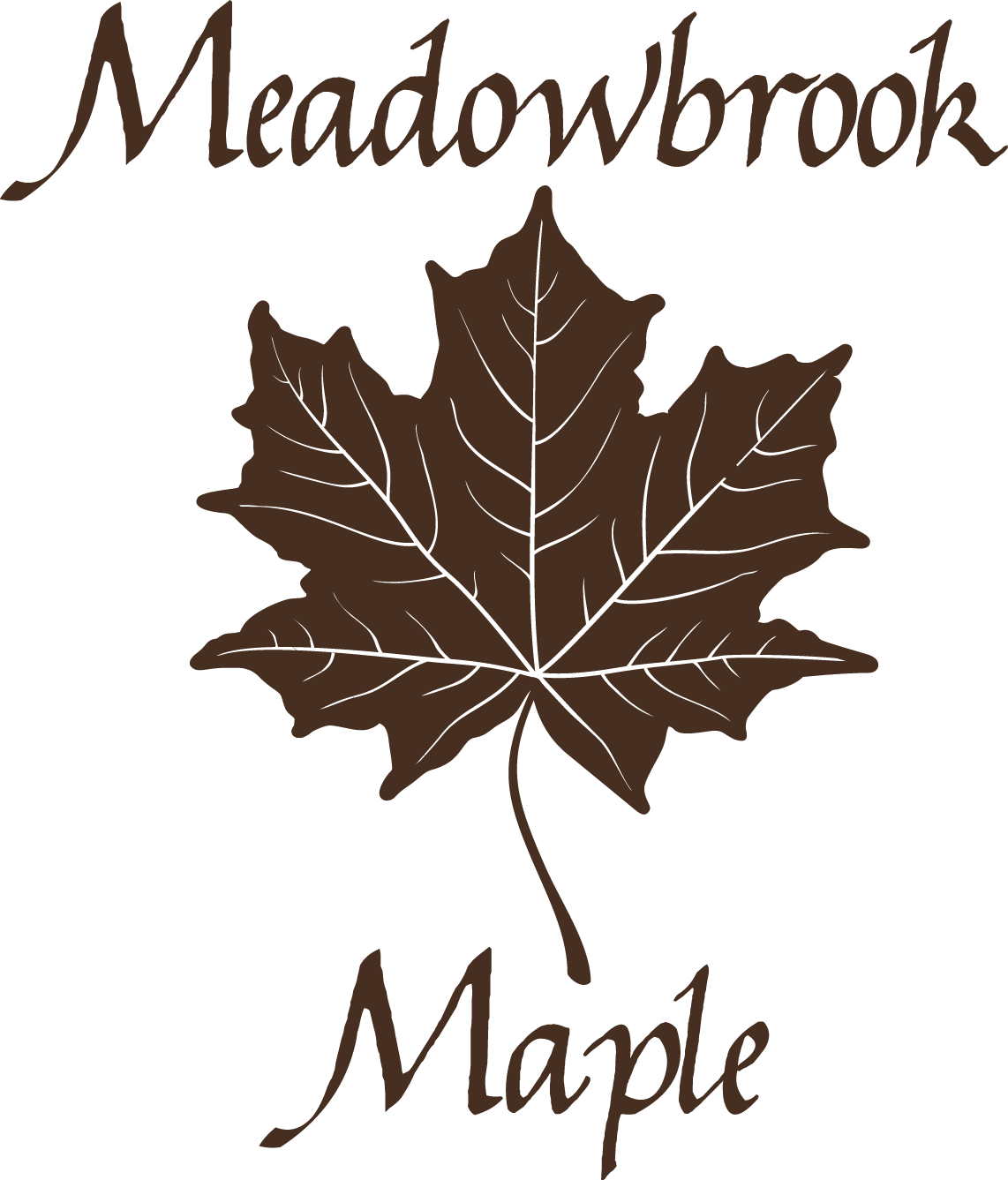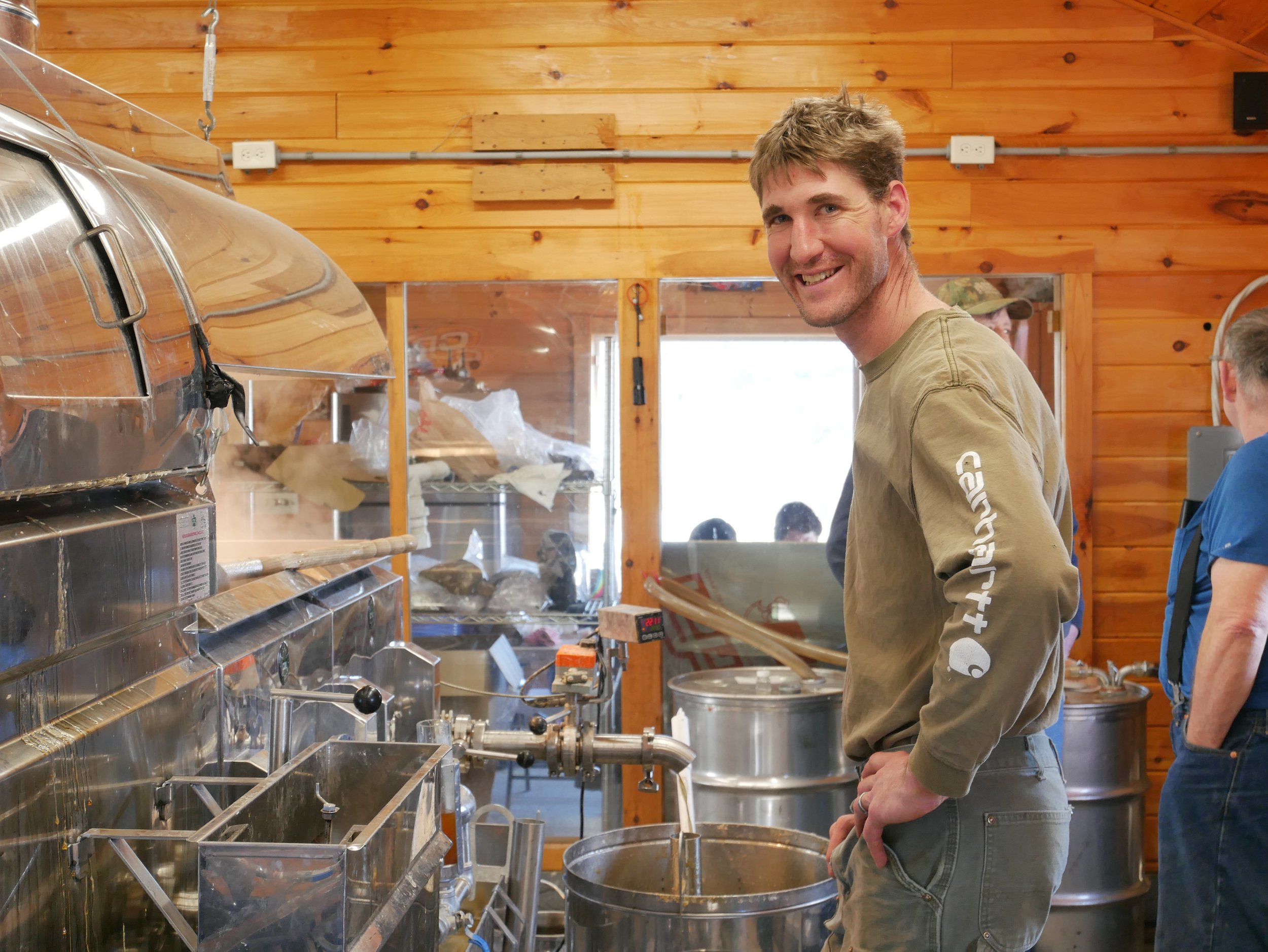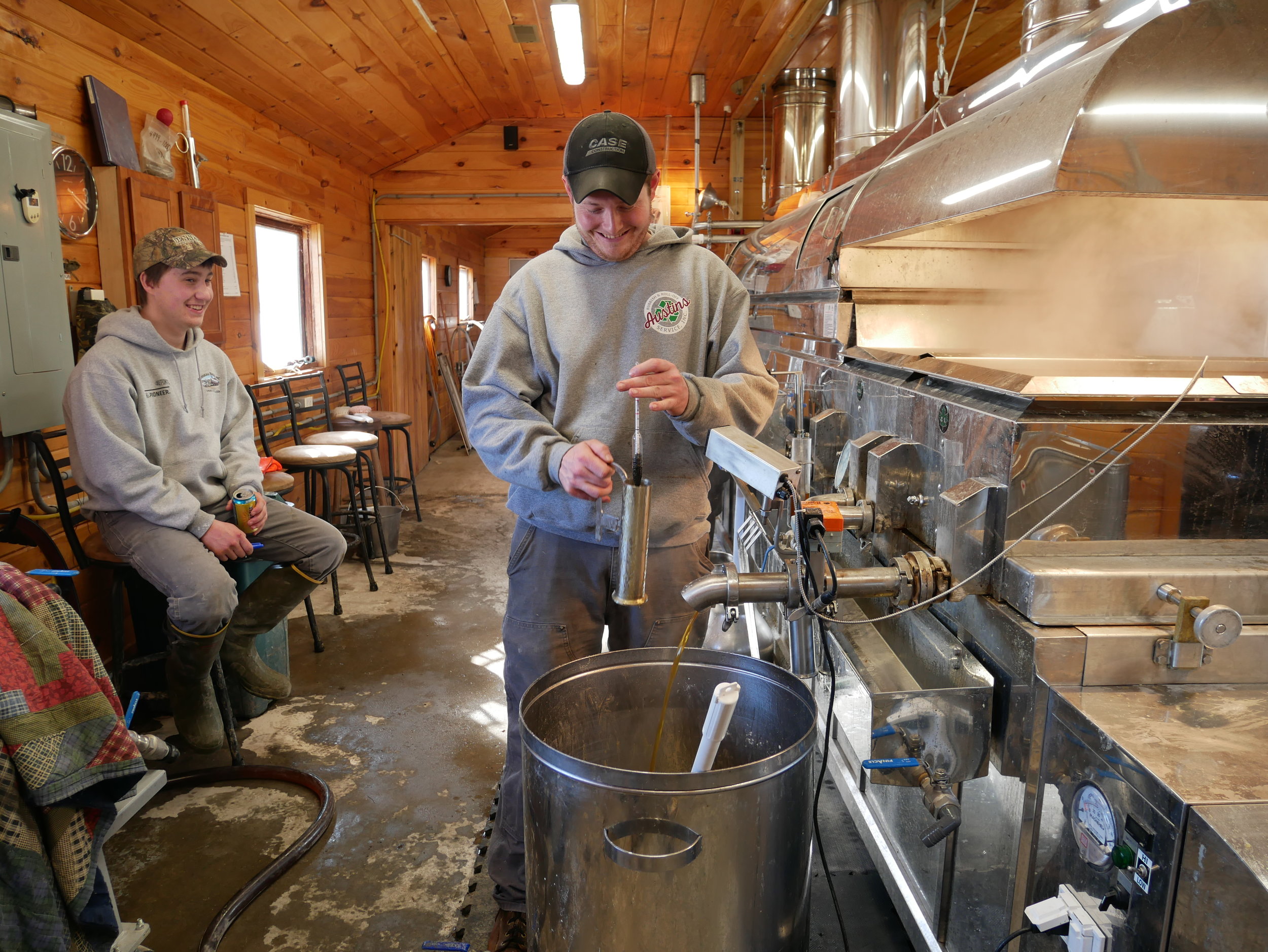Maple Syrup is made in the springtime when the sap begins to flow from the trees as the weather gets warmer. Our work continues throughout the year to keep our sugarbush healthy.
Tapping our trees
We use a Precision Tapper to tap our 5,000 trees.
We have 6,500 Maple trees on over 106 acres. Our trees are connected by a pipeline that carries the sap from the trees to our sugarhouse. Technology allows us to use a vacuum in the pipeline which maximizes the sap volume we get from our trees — this means we can extract more sap to make more maple syrup! In 2012, we switched our trees that were set up with traditional sap buckets to pipeline.
About a month before we expect the season to start, we put little holes in the trees with small devices called "taps" and these connect to the pipeline.
We use Precision Tappers which allow us to create a perfect hole in the tree so that no air can get in the tree. This reduces the risk of bacteria getting in the tree and ensures we produce a high-quality syrup!
Video of tapping our maple trees on over 106 acres of woodland.
Steam rising from the sugarhouse as sap is boiled to make maple syrup.
In the sugarhouse
When all the taps are in the trees, we wait for warm days and cold nights, which will cause the sap to start flowing from the trees and the work in our sugarhouse will begin!
When the sap enters the sugar house it enters a holding tank. Next, it goes into a reverse osmosis machine which extracts 80% of the water from the sap, which leaves roughly 20% of concentrated sap to boil and make syrup. This process saves energy because the sap doesn't have to boil as long to become syrup. Prior to using the reverse osmosis system, we were making between 4 and 5 gallons of syrup per hour. Now, with the reverse osmosis system we make 40 gallons of syrup per hour, which allows us to make our syrup faster while using two-thirds less fuel.
Eric Stebbins boiling sap to make syrup.
After the sap goes through reverse osmosis, it goes into a big evaporator where the sap boils to the correct density of syrup. It takes on average 40 gallons of sap to make one gallon of syrup. In the beginning of the season, the syrup is lighter in grade, as the season progresses the syrup becomes darker.
When the syrup has boiled long enough, it enters a tank with a filter press to remove the impurities and sand that were in the sap from the tree. What's left is a pure and delicious maple syrup!
After the sugaring season is over in the spring, we take the taps out of the trees and wash them. The taps need to be removed from the trees after the sugaring season is over to maintain the health of the tree. It is also important to keep the pipeline that connects the trees intact. Weather and animals can damage the pipeline, and we do a thorough check of our lines regularly. We also have a forestry management plan that helps us keep our woods healthy.
Vermont Maple Syrup being made in April 2014 at Meadowbrook Maple.
Certified organic
Our syrup has been Certified Organic by Vermont Organic Farmers (VOF). That means that we manage our sugarwoods sustainably so that we maintain tree health and ensure long-term preservation of the sugarbush as an ecosystem. Our syrup is made without chemicals or pesticides and everything that comes in contact with our sap and syrup conforms to the rigorous standards of VOF.
Technology to find leaks
The sugaring season lasts, on average, just 4-6 short weeks, and we need to make as much syrup as we can in this short time. Leaks or damage in our pipelines, caused by weather or animals, can hurt our maple syrup yield by reducing the vacuum pressure, and the flow of sap to our sugarhouse. That's why we installed a system that detects any leaks in our pipelines while the sap is running using wireless satellite technology. It shows us on an app where the pressure looks good (green dots) or where it is dropped (orange or red).
Instead of searching for the problem throughout the whole woods when our sap flow slows down, it tells us exactly which sap line to fix and saves us time and sap loss. Maximum sap flow happens within the first two to three hours of a thaw when the weather warms up, which is why it's so important to correct any issues with our pipeline quickly!
Collecting sap buckets in 2009
We made a short video of the process of collecting sap buckets in 2009. As you'll see it requires a big crew!
The 2009 sugaring season at Meadowbrook Maple in Milton, Vermont. The Richards family has been making Vermont maple syrup for over 20 years.







